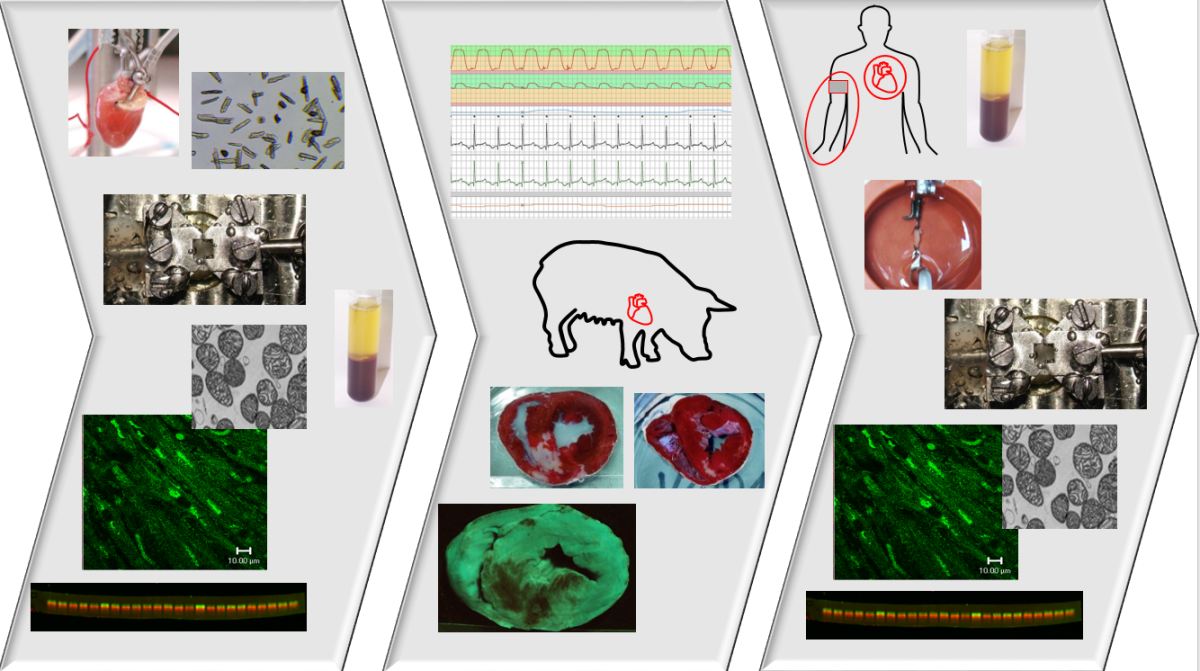Translation: from Bioassays to Patients

Translation: from Bioassays to Patients
Only by combining different ex-vivo studies with an in vivo large animal model (pig) can we investigate details of cardioprotection that would not be detectable with more reductionist individual studies.
In vitro methods are well suited for the investigation of cellular and subcellular target structures as well as intracellular signal transduction in cardioprotective measures. Functional investigations can be performed on isolated perfused hearts, isolated vessels, cardiomyocytes and mitochondria. Downstream protein biochemical analyses are used to identify the signalling cascades involved in cardioprotection.
Systemic cardioprotective signal transduction by humoral factors and/or neuronal signalling pathways can only be investigated in vivo in large animal models.
As a first step towards the patient, bioassays from human cardiac tissue (isolated atrial muscle strands, cardiomyocytes or mitochondria) are performed, which then allow a direct comparison of the patient data to data obtained in experimental models.
Questions about the Project?
Request information about this project here!
